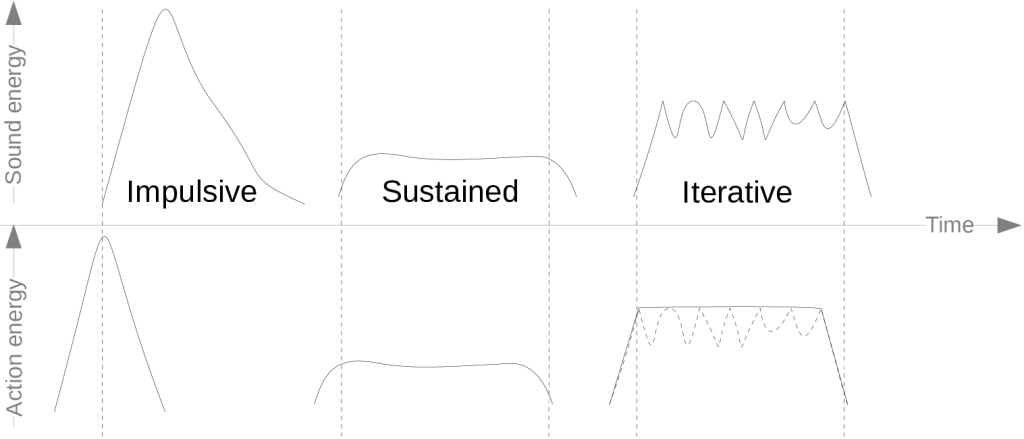Over the last few years, I have worked on a book project with the working title Sound Actions. The manuscript has been through peer reviewing and several rounds of editing and will be published by The MIT Press sometime in 2022.
Action-Sound Couplings and Mappings
The book is based on the action-sound theory I developed as part of my dissertation. My main point is that we experience the world through action-sound couplings and mappings. An action-sound coupling is based on the interaction between physical objects. The sonic result is based on the mechanical and acoustical properties of the objects involved.

On the other hand, an action-sound mapping is designed and constructed using either analog or digital technologies.

My main argument in the book is that action-sound couplings and mappings are different. This is not to say that one type is better than the other; they are just different. I also suggest that we experience them differently. This is based on ecological psychology, focusing on how we experience the world through interaction with the environment. The environment in my context can be anything that leads to sound production, which, in fact, is a lot of the things we do.

Sound Action Types
We all produce and experience many sound actions every day—most without thinking about them. Sometimes we do, for example, when we enter a quiet place, such as a library. Then we try to be quiet and adjust our actions to produce less sound. We may also be aware of others’ sound actions, particularly if loud. There is clearly a social aspect of sound actions.
There are many different types of sound actions. Based on the taxonomy of Pierre Schaeffer, we may talk about three main types of sound actions: impulsive, sustained, and iterative.

Daily Sound Actions
Throughout 2022, I will publish one sound action daily. These will be short video recordings of particular sound actions. I have three goals with this project:
- Allow people to reflect on the beauty of everyday sound actions.
- Inform about one of the core concepts of the publication of my new book later this year.
- Start thinking about the audiovisual nature of our surroundings, which is at the heart of my new research project AMBIENT: Bodily Entrainment to Audiovisual Rhythms.
Here is the YouTube playlist that I will add videos to during the year:
I am happy to receive suggestions for new sound actions to include! It would also be great to get links to other recordings of sound actions.
